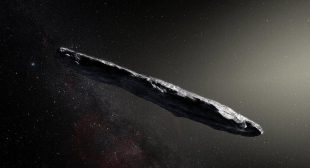astronomy
Washington (AFP) - Discovering there's intelligent life beyond our planet could be the most transformative event in human history --Â but what if scientists decided to collectively ignore evidence suggesting it already happened? That's the premise of a ...[Read more]
1
Like
Save
Mankind has been gazing into space for some time now, but scientists still haven’t found any evidence that intelligent life exists in our neck of the cosmic woods. The universe is, of course, huge, so we normally just assume that our inability to detect ...[Read more]
1
Like
Save
When looking back into the deep recesses of the universe, even huge objects like planets, stars, and galaxies can appear small. Magnification can help, but how do you get a magnifying glass large enough to spot stars billions of light years away? ...[Read more]
0
Like
Save
Early last year a far-off star captured the imagination of the scientific community thanks to its incredibly bizarre behavior. The star, which is officially named KIC 8462852 but is better known as “Tabby’s Star,” frequently goes dim at unpredictabl ...[Read more]
0
Like
Save
Our solar system's first known interstellar visitor is likely even more alien than previously imagined, a new study suggests.
The mysterious, needle-shaped object 'Oumuamua, which was spotted zooming through Earth's neighborhood last October, probably ori ...[Read more]
0
Like
Save
The first ever interstellar visitor to our solar system is wrapped in a layer of organic insulation, scientists have said. Oumuamua has enthralled astronomers and the public since it flew through the solar system in October. ...[Read more]
0
Like
Save
This approach postulates that a quantum two-dimensional system which exists on the boundary of a special curved 3D space, called the Anti-de Sitter space, can be described by classical gravitational physics," the researcher noted. "Thus, the three-dimensi ...[Read more]
0
Like
Save
Scientists are planning to study a mysterious cigar-shaped asteroid, the first confirmed object from outside our home in the cosmos, hurtling through space on its way out of our solar system. ...[Read more]
0
Like
Save
A rocky cigar-shaped asteroid has been confirmed as the first ever interstellar object to enter our solar system – and the space visitor could even provide an insight into the formation of other planetary systems beyond our own.
Spotted last month by as ...[Read more]
0
Like
Save
Traveling above Jupiter at more than 130,000 miles per hour, NASA's $1 billion Juno probe took its ninth set of stunning flyby images on October 24. But the sun slipped between the giant planet and Earth for more than a week, blocking the spacecraft from ...[Read more]
0
Like
Save










